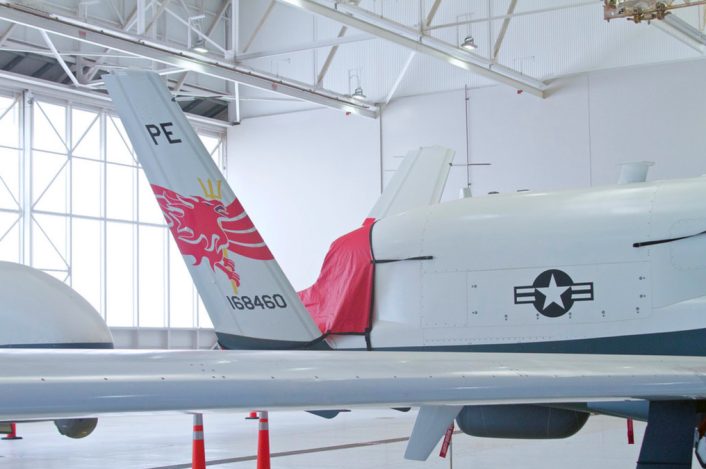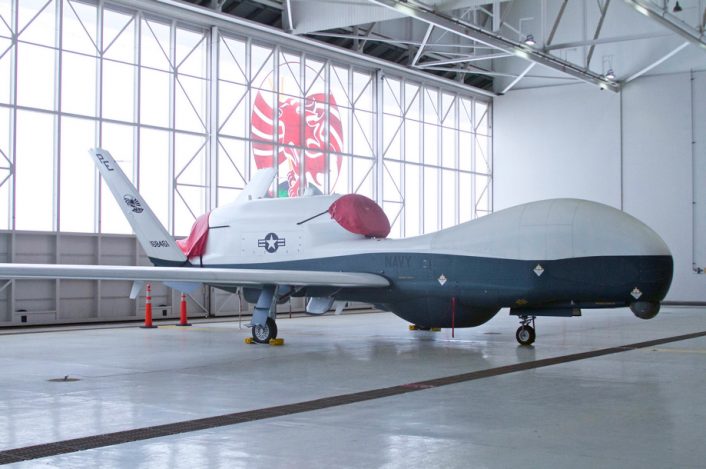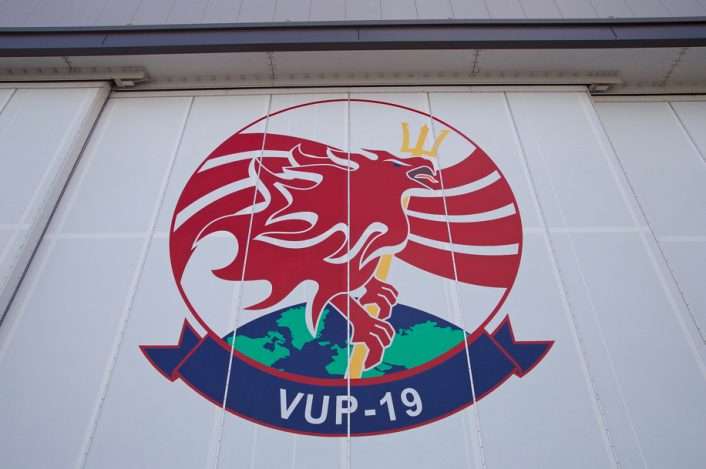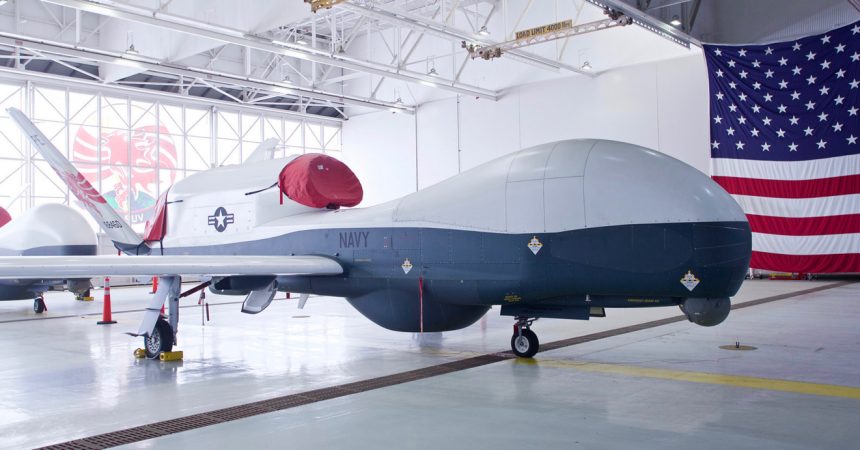NBVC Point Mugu’s first two Triton drones commence operations (with interesting tail markings).
On May 31, Unmanned Patrol Squadron One Nine (VUP-19) DET Point Mugu hosted a ribbon cutting ceremony, marking on track delivery of an Early Operational Capability (EOC) to the Fleet and completion of their new hangar at Naval Base Ventura County (NBVC) Point Mugu.
VUP-19, that will fly and maintain Triton to support overseas operations beginning in 2018, currently operates two MQ-4C Tritons: the first arrived at NBVC on Nov. 9, 2017 and the second arrived in April this year. The two UAVs are housed in a specially built hangar used by the maintenance detachment to accommodate the pair of 130.9-ft wingspan drones built by Northrop Grumman for intelligence, surveillance and reconnaissance missions.
Shorealone Films photographer Matt Hartman attended the ceremony at NBVC Point Mugu and took the photographs you can find in this post. Noteworthy, the two aircraft feature different tail markings: the first one #168460 sports a high-visibility emblem of VUP-19, whereas the second one #168461 sports a smaller, low-rez badge.


The U.S. Navy’s MQ-4C “Triton” Broad Area Maritime Surveillance (BAMS) is an ISR (Intelligence Surveillance Reconnaissance) platform that will complement the P-8A Poseidon within the Navy’s Maritime Patrol and Reconnaissance Force family of systems: for instance, testing has already proved the MQ-4C’s ability to pass FMV (Full Motion Video) to a Poseidon MPA (Maritime Patrol Aircraft). An advanced version than the first generation Global Hawk Block 10, the drone it is believed to be a sort of Block 20 and Block 30 Global Hawk hybrid, carrying Navy payload including an AN/ZPY-3 multi-function active-sensor (MFAS) radar system, that gives the Triton the ability to cover more than 2.7 million square miles in a single mission that can last as long as 24 hours at a time, at altitudes higher than 10 miles, with an operational range of 8,200 nautical miles.
The U.S. Navy plans to procure 68 aircraft and 2 prototypes.

The unmanned aircraft of VUP-19 are expected to deploy to Guam later this year, with an early set of capabilities, including basic ESM (Electronic Support Measures) to pick up ships radar signals, for maritime Intelligence Surveillance Reconnaissance mission. A more significant SIGINT (Signal Intelligence) capability will be deployed to the fleet in 2021, when the Triton is expected to reach an IOC (Initial Operational Capability). By then, the U.S. Navy plans to add two additional MQ-4Cs to the Guam deployment that would allow a 24/7/365 orbit. With the IOC of the Triton, the service will retire the EP-3E ARIES II as the Navy’s signals-intelligence platform.
Interestingly, some of the MQ-4C test flights could be tracked online. Here’s an example dating back to October last year:
45,000ft c/s SCORE35
🇺🇸 US Navy MQ-4C #drone #UAV pic.twitter.com/POfUUEgi9t
— CivMilAir ✈ (@CivMilAir) October 24, 2017
The U.S. Navy plans to operate five 24-hour orbits around the world. The UAVs will be controlled from two MOBs (Main Operating Bases): Naval Station Mayport, Florida, and Naval Air Station Whidbey Island, Washington. The aircraft will be launched (and recovered) from 5 bases: Naval Air Station Sigonella, Italy; an unspecified location in the Middle East (Al Dhafra, UAE, where the U.S. Air Force RQ-4 are forward deployed?); Naval Air Station Guam; Naval Station Mayport; and Point Mugu.
Make sure you visit this link to have a look at the whole set of photographs taken by our friend Matt Hartman during the ribbon cutting ceremony at Point Mugu.









